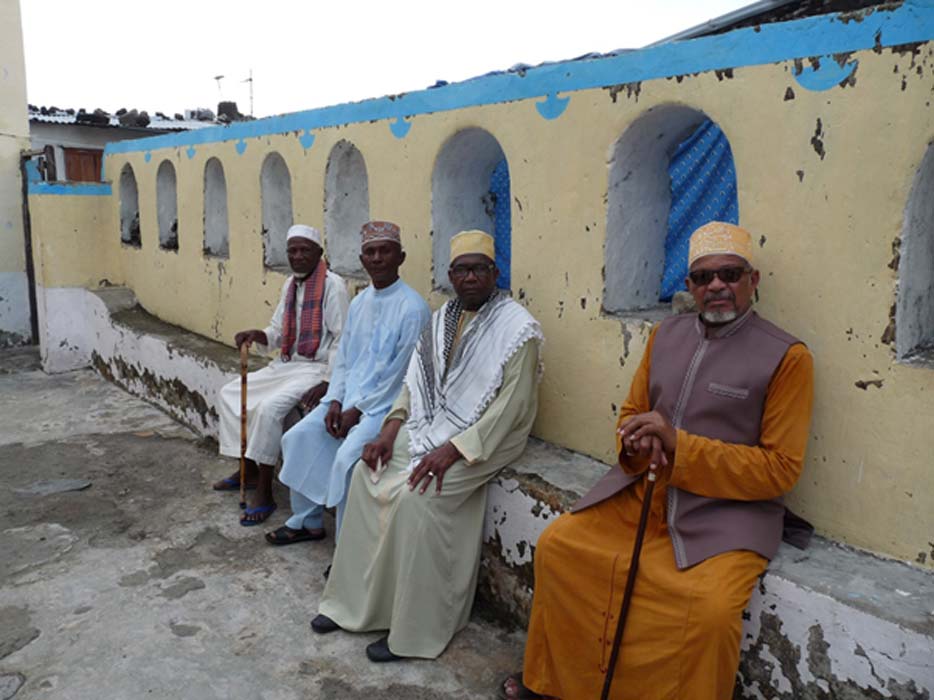The Comoros Archipelago and An Aged Tradition of Public Spaces
The Comoros is an archipelago of islands located off the East Coast of Africa in the Indian Ocean and north of Madagascar, and yet, one of the least known countries in Africa. Because of its relative isolation it has been largely able to preserve its traditional way of life, but even so, it has not been left untouched by the forces of globalization. There are many interesting historic monuments in the islands, which has a rich and fascinating history. One of the most important of these is the Funi Aziri Bangwe in the town of Ikoni. This site is helping to perpetuate the traditional Comorian way of life.
The 1500 Year Long History of the Comoros
The Comoros are home to many different cultures and groups and each island has a distinct identity. They were first settled by Bantu-speaking people and later by an ethnic group, the Shirazis, whose origin was in what is now south-western Iran. Among those who settled on the archipelago were peoples from South-East Asia, Madagascar, Arabia, and also Swahili speakers from the African coast. As a result, a diverse and unique culture developed on the islands.
Islam was introduced at an early date by Arabs and has decisively shaped their culture and is still the dominant religion in the islands to this day.
The Comoros were divided into a number of warring sultanates who were very active in the slave trade. In the nineteenth century the French colonized the islands and ruled the islands until the 1970s. Today the Comoros is a federal Republic.
The Iconic Bangwe
Funi Aziri is perhaps the best-known examples of a Bangwe. This is a public space and is unique to Comorian culture. These are to be found in every village and town in the islands and there is often more than one in a settlement. The Bangwe is an open area where men gather at certain times of the day to discuss local issues and to socialize. The men are usually divided into specific age groups.
- The Delhi Sultanate: 300 Years of Muslim Power Over the Indian Subcontinent
- Traditional African Medicine and its Role in Healing in a Modern World
- The Rich Mythology and Megalithic Culture of the Ancient Berbers, Lords of the Desert

Comoros, Funi Aziri Bangwe.Source: Photo by World Monument Fund
These public spaces, however, are not just a male preserve, they are also the location of important social and community events such as weddings, rituals and celebrations. Traditional dancing is also a feature of the Bangwe where women perform dances in ornate local customs. This is not for the benefit of tourists, but are genuine expressions of local culture and identity.
Funi Aziri Bangwe
The Funi Aziri Bangwe is to be found in the historic town of Ikoni, which is located on Grande Comore also known as Ngazidja. Although it is one of three in this town, it is the oldest and dates from the seventeenth century, built by a powerful Sultan to commemorate his son and heir.
The Funzi Aziri is in an old walled part of the town. The medina is the central space of the Bangwe, and is divided into several sections. The central space is raised and overlooks the town with stairs leading to the entrances. The Bangwe is accessed by three entrances through narrow, winding alleyways.
In the central medina is the main gate which has a series of arches and windows that show the influence of classic Arab architecture. The interior of the Bangwe contains a series of stone benches which demarcates the spaces where specific groups of men often congregate. The condition of the entire area is a cause of concern as the site needs to be painted and parts of it are at risk of becoming derelict. The site was included in the 2014 World Monuments Watch which has prompted local activists to campaign for its preservation.
How to get to Funi Aziri Bangwe
The international airport is situated in the capital of Moni on the island of Grande Comore, and flights to the island are via other African airports. Ikoni is not far from the capital of Moni and anyone is welcome to visit the Funi Aziri Bangwe, but tourists need to be culturally sensitive. Please note that everyone needs a visa.

Comoros beach (Kurlvink, J / CC BY 2.0)
Accommodation near the Funi Aziri Bangwe is plentiful and well worth visiting as the idyllically tropical beaches of the Comoros, which are not far, have been a well-kept secret for years.
Top image: Funi Aziri Bangwe Source: Photo by World Monument Fund
By Ed Whelan
References
Beaujard, P. (2007). East Africa, the Comoros Islands and Madagascar before the sixteenth century: on a neglected part of the world system. AZANIA, 42(1), 15-35.
Available at: https://www.tandfonline.com/doi/abs/10.1080/00672700709480448?journalCode=raza20>
Quod, J. P., Naim, O., & Abdourazi, F. (2000). The Comoros archipelago.
Available at: http://www.vliz.be/en/imis?refid=4629
Walker, I. (2016). Place and space on Ngazidja and among Comorians in Zanzibar.
Available at: 2342318/component/file_2342317/content

















